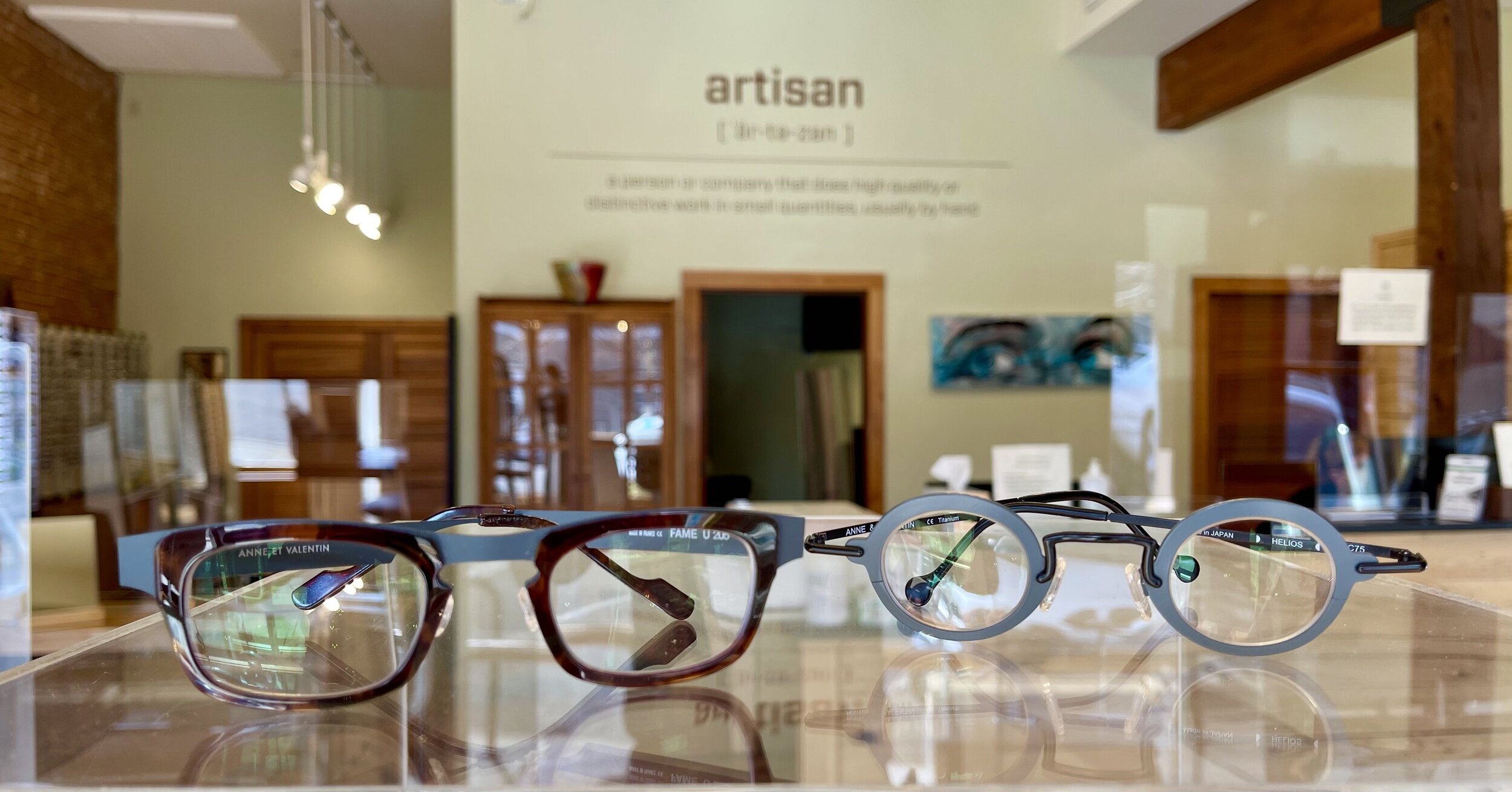Why Are Glasses So Expensive? Part 2: Lenses
When patients visit the optician or the eye doctor, they often ask “why are lenses so cheap at brand X?” The answer is simple, but not at all intuitive. There are vast differences between lens design and how they perform, but you can’t see that by just looking at them.
Look at the two pairs above. Can you tell the difference in the lenses? Neither can I by simply looking at them, yet they are RADICALLY different. One is a dedicated computer progressive and one is a full, high end full range progressive. For those keeping score who really care…IOT Camber Office 2.0 and Seiko Surmount WS. Both are great lenses. Both do radically different things. If I threw a third budget pair in there, say Costco or Eyemart (in a good frame, so it wasn’t a giveaway), it would not stand out…until I put it on.
We like to use the analogy of automobiles. Different cars do different things. The ones that cost more tend to have better, more advanced features. The thing is...that’s pretty obvious. A Chevy Suburban is not a Porsche 911 is not a Kia Soul. Look at two just as different glasses lenses and to the naked eye, they look the same. They’re not, especially when it comes to progressives. So, what makes up the cost differences? Materials, features and designs.
The base material of most lenses is some sort of plastic (most offices do not use glass anymore). The least expensive, and thus most widely found, is polycarbonate. It has two advantages. It is relatively thin and impact resistant. The tradeoff is that optically speaking it’s the worst material there is. It scatters white light into the constituent rainbow of colors more than any other material. It also scratches if you look at it sideways.
The upgrade material is Trivex. While not quite as thin as polycarbonate, it is just as light, impact resistant and very scratch resistant. Unless we need even thinner materials, it is our baseline choice for all lenses, especially lenses that need to be grooved or drilled.
There are higher index lenses for thicker prescriptions. The mid-level is 1.60, but we can go as thin as 1.74. The higher the index, the more expensive the lenses will be.
Features frequently recommended are anti-reflective coatings (ARC), photochromic materials like Transitions, tints and polarization.
There is a wide range of ARCs. Our preferred one involves stripping the base scratch coat off of the stock lens, re-scratch coating it and then adding multiple layers of ARC matched to that substrate on top of that. It takes many steps, but it is the most effective and the most durable. As you might guess it’s the most expensive.
Lastly, there are the progressive designs. Just like cars, there are a wide array of progressives. Unlike cars however, you can get models from past years too, some 25+ years old. No one would expect a 1996 Honda Civic to have all the features of the same model in 2021, let alone the features of an S Class Mercedes. The differences are that start among progressives. The newest models have features that provide less swim, better integration between the two eyes and wider usable areas.
Then there’s the issue of “digital.” What does that mean? It is just a manufacturing technique that uses CNC rather than lap grinding. Old designs can be made with this new technique and will perform no better than the 25-year-old originals. Yet, they’ll still carry the buzzword...digital.
The most advanced progressives are freeform. They are manufactured digitally, with CNC, but they are completely customized, not only to the individual’s prescription, but to how they fit in the frame, including tilt and wrap. Every pair is unique. The only way to make these custom compensated lenses is to take detailed position of wear measurements.
So, just as all cars are not created equally, all lenses are not created equally. Some of us only need basic transportation, just as some of us can get away with basic lens designs, materials and features. Most will notice the difference though and no one simply charges more for the inexpensive stuff. When you compare on an apples-to-apples basis, prices are pretty consistent across the industry.

